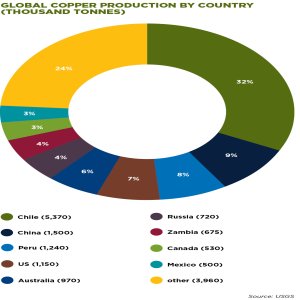Transforming Mines with Satellite Communication

STORY INLINE POST
Problems in a mine’s communications system can negatively impact upon a number of different aspects of the business, from safety and security to operations and productivity. While mining companies have traditionally used terrestrial services, they are turning to satellite solutions for their communications needs as a more reliable and longer term investment, though this can be an easier spend for bigger mining companies than smaller ones. “Large mining operators understand the need to keep up with the latest sophisticated mining equipment, but for smaller companies the main barrier is the cost, because satellite telecommunication, although useful, is not cheap,” says Pedro Hoyos Salazar, Deputy Director of Commercial Innovation & Marketing at GlobalSat. His company, which installs and maintains digital satellite systems at its clients’ mines, is expecting more and more smaller mining companies to turn towards these solutions in the long term. “It can take a while but operators usually realize that continuing without a digital satellite system is not an option. As they grow they will need telephone and internet access. They could upload their information to a hard disk drive, go to the nearest town and send it from any available internet connection, but this is just not viable,” adds Hoyos Salazar.
GlobalSat also installs videoconferencing services that help mining companies to communicate between different mines and head offices. “Being connected in real time with the mine is vital for managers in making their decision making process faster,” explains Hoyos Salazar. Aside from making communication more convenient, he also points out that these technologies bring financial benefits for mining companies, for example by reducing the need for travel and being able to order spare parts more efficiently.The technology for these communications systems is designed to make them as simple as possible to install. “The equipment GlobalSat provides is ready to be connected to a pre-existing IP address or internet service. The company only needs a very small modem and a power supply – ideally a regulated power supply - in order to extend the life of the equipment,” says Hoyos Salazar.
Nevertheless, one should not underestimate the difficulties in getting this sort of equipment installed in large, isolated mines. Large mines can require a very large bandwidth and multiple antennas in order to ensure that the mine’s connectivity is fast enough, as well as backed up. The bandwidths used by mining companies must be enough to also connect mobile devices that are taken to different locations out in the field at various stages of the mining project. At the exploration stage, for example, GlobalSat provides antennas that come in an easy-to-carry suitcase, so that they can function in the field and be moved around to different areas as required. This means that during long stretches of time being out in the field exploring, they can be connected in real time through equipment that is easy to use and can be set up in just an hour and a half. “Good exploration companies with innovative software send the information to the office and laboratory via our systems, allowing them to achieve results in a very short time. This is the easiest way to make decisions and to know whether exploration is going in the right direction, all the while optimizing time and costs,” says Hoyos Salazar. But it is not just at the exploration phase that this technology is important. Once companies start to ramp up their operations in construction and exploitation, keeping communication efficient is equally as important.
The satellite bandwidth is one of the most important factors in pushing up the cost of satellite communications, and the more information that is being uploaded and downloaded using the connection the bigger the bandwidth will need to be, and thus the greater the cost. For this reason GlobalSat has been using three different platforms, provided by the company’s main technology provider, Gilat. “Every new platform Gilat develops is able to provide more megabits per megahertz, meaning that our services become more cost effective for us and for our clients,” explains Hoyos Salazar. “GlobalSat is the main client for both Gilat and Intelsat in the Mexican market, and this has helped us all in getting better prices and growing rapidly together,” he adds. GlobalSat takes this issue of emergency maintenance seriously, but the very isolated nature of some mines and the security challenges posed in transporting valuable equipment mean that getting the right equipment to the mine securely can take a number of hours. For this reason, some companies set up a second or third antenna for backup, so that if one antenna goes, the mining company will be able to use another in order to contact Globalsat, tell them there has been a problem, and arrange for the company to send someone to fix the problem immediately. Hoyos Salazar is confident about the reliability of GlobalSat’s equipment. Perhaps it is for this reason that some of Mexico’s biggest mining companies, such as Goldcorp and First Majestic Silver, have chosen to work with GlobalSat. “Once they experience the benefits of satellite communications, they will never work without it again,” he says.





















